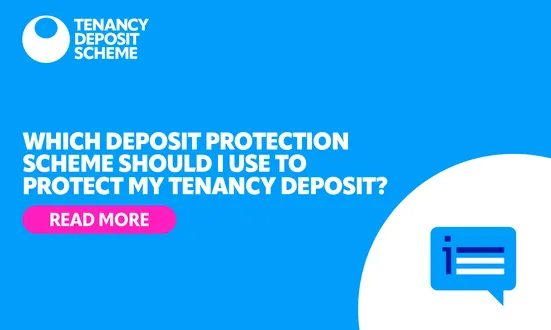The law protects tenants from illegal eviction. Make sure you know how and when you can evict a tenant lawfully.
A Fife landlord made the news recently when he boarded up his tenant’s home while both he and her were at a court hearing.
The rash action delayed landlord Satwant Sidhu’s eviction attempts and landed him with a £540 fine. But this penalty was lenient. Many landlords who illegally evict their tenants can face criminal convictions, custodial sentences and damages amounting to several thousand pounds.
Furthermore, a court can issue an injunction forcing a landlord to allow their tenant back into their property. And unlawfully evicting a tenant can prejudice the landlord’s right to claim damages of their own, such as overdue rent.
There are specific procedures for evicting a tenant
In Scotland, the Rent (Scotland) Act 1984 protects tenants from unlawful eviction and harassment. In England and Wales, the relevant act is the Protection from Eviction Act 1977.
Both Acts prohibit eviction “without due process of law”. This means that landlords need to follow set procedures to remove their tenant.
For assured shorthold tenancies, landlords must give a minimum notice period. If their tenant does not leave, the landlord must apply for a possession order from the courts. If their tenant still does not leave, the landlord must then apply for a warrant for eviction; only bailiffs can lawfully evict private tenants.
The following actions usually qualify as illegal eviction:
- Giving the tenant insufficient notice to leave
- Physically ejecting the tenant from the property
- Changing the locks while the tenant is out
- Removing the tenant’s belongings without consent
- Obstructing access to the property or parts of the property
- Harassing or intimidating the tenant to force them to leave
What is harassment?
Though harassment can contribute towards an unlawful eviction, it is a separate offence in its own right.
Landlord harassment is defined in the Protection from Eviction Act 1977. It means deliberate actions a landlord takes that are intended to disrupt their tenant’s life or make them leave the property. If someone does this on a landlord’s behalf it is also harassment.
Cutting off utilities, opening a tenant’s mail, removing a tenant’s belongings, withholding services and violent acts or threats of violence are all examples of harassment.
Important to remember is that this definition is consistent regardless of circumstance. So even if a tenant is in arrears or has otherwise broken the terms of their tenancy agreement, their landlord must go through the proper channels.
Surrender: when a tenant leaves voluntarily
Most tenancies end long before the bailiffs turn up. The majority end when the tenant agrees to leave of their own accord.
A tenant can surrender a tenancy either by signing a formal deed of surrender or ‘by operation of law’. The latter is also called ‘implied surrender’. It means that the parties’ actions are consistent with the termination of the tenancy. For example, if the tenant moves out their belongings and returns the keys to the landlord, who accepts them.
Neither court orders nor warrants are necessary in either case. But if a tenant who surrendered by operation of law then challenges their eviction in court, the landlord would need to prove their implied surrender.
Note that the Housing Act 1988 prevents a tenant from ending the contract during the fixed term. If they leave early, they will still be liable to pay the full rent. The only exceptions are where the landlord agrees, or where the tenancy agreement contains a break clause.
What if the mortgage lender wants to repossess the property?
If a buy-to-let mortgage lender needs to repossess a property, it may be possible to evict the tenant on these grounds.
The detailed rules are in schedule 2, ground 2 of the Housing Act 1988. The lender must be entitled to exercise a power of sale and require vacant possession to do so. The landlord must advise the tenant before the tenancy begins that the property is subject to a mortgage and that the lender may be entitled to repossess it.
No ground in the 1988 Act permits landlords to obtain vacant possession in order to sell the property themselves. In such cases, they will need to issue a section 21 notice.
Evicting a tenant who has abandoned the property
Abandoned properties can cause problems for landlords. Even though it might appear as though the tenant has left, if they have not surrendered the tenancy, they might return. It could be possible that they have had an extended hospital stay or are in prison.
In any case, landlords still need to follow the procedures this article has already outlined. Either they must reclaim possession with a court order, or they must be able to prove implied surrender.
This means that the tenant’s actions must be consistent with an intent to vacate. If they leave some or all of their belongings, for instance, a court may view this as a demonstration of intent to return.
In these situations, a court will ask the following questions of a landlord:
- Has the tenant handed over the keys?
- Have they stopped paying rent?
- Have you attempted to contact the tenant or a friend, guarantor or relative of the tenant?
- Did you approach the neighbours to see if they knew anything about the tenant’s circumstances?
- Did you investigate the property from outside to look for signs of abandonment?
Certain measures protect tenants from retaliatory eviction
Retaliatory eviction is the practice of evicting tenants who raise legitimate complaints about the quality of their home.
Previously, landlords could evict tenants using the ‘no-fault’ section 21 notice under any circumstances. But the Deregulation Act 2015 introduced penalties for landlords who attempt to evict a tenant for raising complaints.
Tenants have the right to ‘quiet enjoyment’ of their home
Underpinning eviction law is one of the oldest aspects of property law: the covenant of quiet enjoyment.
All tenants have the right to occupy their rental property without disturbance from the landlord or someone acting on their behalf. This is implied in all tenancies, irrespective of whether it is in the tenancy agreement. Landlords who enter their tenant’s home without permission or instruct others to do so are in breach of this covenant.
Tenants also have the automatic right to ‘enjoy’ their use of the property. Landlords who hinder this right – for instance by failing to carry out essential maintenance or cutting off services – are also in breach of this covenant.
Quiet enjoyment is one of a tenant’s key rights and underpins a great deal of landlord and tenant law. Landlords should be familiar with it and always bear it in mind when deciding how to act.
Other news stories


